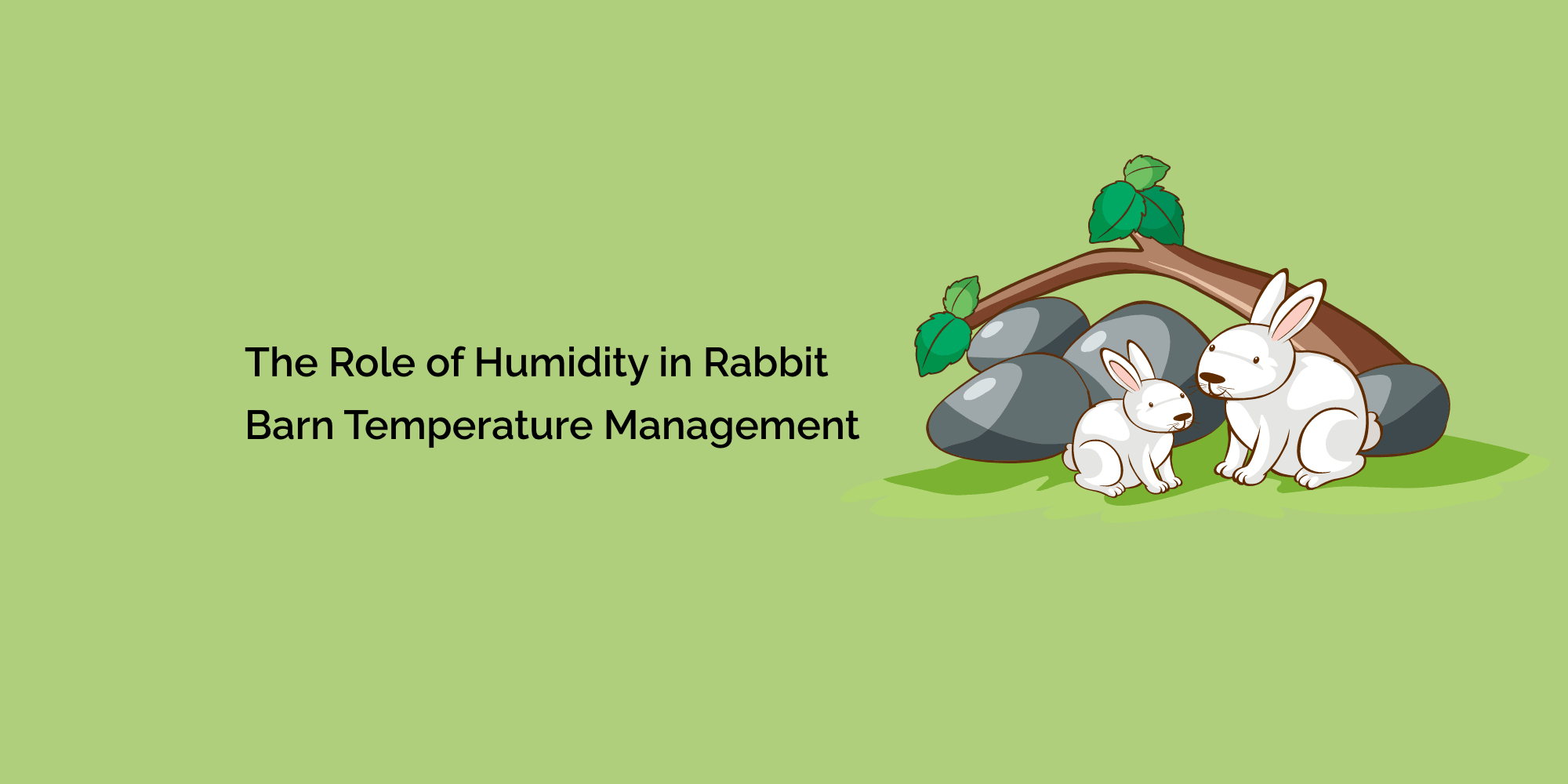When it comes to rabbit barn temperature management, humidity plays a critical role in maintaining a comfortable and healthy environment for the rabbits. Humidity refers to the amount of moisture present in the air, and its proper regulation is essential for the well-being and productivity of the animals.
In this comprehensive blog, we will delve into the significance of humidity in rabbit barns, its impact on the rabbits' health, and effective strategies for managing humidity levels to ensure optimal living conditions.
Understanding Humidity and its Effects
What is Humidity?
Humidity is the measure of water vapor present in the air. It is typically expressed as a percentage and can greatly influence the overall comfort and health of rabbits. High humidity levels can make the barn feel muggy and uncomfortable, while low humidity can lead to dryness and potential respiratory issues.
The Importance of Proper Humidity Management
Proper humidity management is vital for several reasons. Firstly, it directly affects the rabbits' ability to regulate their body temperature. High humidity can hinder their ability to dissipate heat, leading to heat stress and reduced performance. On the other hand, low humidity can cause dehydration and discomfort.
Impact of Humidity on Air Quality
Humidity also influences air quality within the barn. High humidity can foster the growth of mold, bacteria, and pathogens, leading to health issues in rabbits. Additionally, excessive moisture in the air can create a breeding ground for pests and parasites.
Ideal Humidity Levels for Rabbit Barns
Recommended Humidity Range
Maintaining the right humidity range is crucial. For most rabbit breeds, the ideal humidity range is between 40% to 60%. This range allows the rabbits to stay comfortable and helps prevent issues related to excessive moisture or dryness.
Monitoring Humidity Levels
Regular monitoring of humidity levels is essential to ensure they remain within the recommended range. This section will explore various tools and methods available for accurate humidity measurement in rabbit barns.
Managing Humidity in Rabbit Barns
Natural Humidity Control
Natural ventilation techniques, similar to those discussed in the previous blog, can contribute to humidity management. Proper air circulation and ventilation help regulate humidity levels by removing excess moisture and preventing the buildup of stale air.
Humidity-Controlling Equipment
Humidity-controlling equipment can be employed to maintain the desired humidity range. This section will discuss the following devices:
a. Dehumidifiers:
Dehumidifiers help reduce excess moisture in the air, especially in humid climates or during periods of increased rainfall.
b. Humidifiers:
In dry climates or during winter, humidifiers can add moisture to the air to prevent dryness and maintain the appropriate humidity level.
Proper Barn Insulation
Insulating the barn properly can play a significant role in humidity management. Well-insulated barns can prevent excessive moisture buildup during humid weather and keep the environment more stable.
Flooring and Bedding Choices
Choosing the right flooring and bedding materials can impact humidity levels. Certain materials may absorb more moisture than others, affecting the overall humidity within the barn.
Addressing Humidity-Related Health Concerns
Respiratory Health
High humidity levels can contribute to respiratory problems in rabbits, such as pneumonia and respiratory infections. This section will discuss the signs of respiratory distress in rabbits and how to address humidity-related health concerns.
Preventing Mold and Fungal Growth
Excessive humidity can lead to the growth of mold and fungi in the barn, which can be harmful to both rabbits and caretakers. We will explore preventive measures to avoid these issues.
Best Practices for Humidity Management
Regular Cleaning and Maintenance
Maintaining a clean and hygienic barn environment is crucial for effective humidity management. This section will provide guidelines for regular cleaning and maintenance routines.
Humidity Management During Extreme Weather
Extreme weather conditions, such as heatwaves or heavy rainfall, can challenge humidity management efforts. This section will address specific strategies for maintaining humidity control during such periods.
Conclusion
In conclusion, humidity is a critical factor in rabbit barn temperature management. It directly affects the rabbits' well-being, health, and productivity. Understanding the impact of humidity, maintaining the right humidity range, and employing effective humidity management strategies are essential for creating a comfortable and safe environment for the rabbits.
By incorporating natural ventilation techniques, utilizing humidity-controlling equipment, and following best practices for humidity management, rabbit farmers can ensure optimal living conditions for their livestock, promoting overall health and productivity.
Remember, each barn may require unique adjustments based on its location, size, and environmental factors. Continuously monitoring humidity levels and making necessary adaptations are key to achieving the best results in rabbit barn temperature and humidity control.








